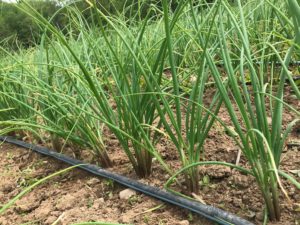 For some gardeners, weeding is the epitome of boring—a huge drag, an annoyance. For others, protectiveness over beloved plants means they weed with a passion, relishing the release of each weed's hold in the soil. Others just enjoy the catharsis, or even the meditation, of the task. Whether you like it or not, though, weeding has to be done. So to make this gardening necessity as effortless as possible, we're tackling weeding basics in this week's Grow-How.
For some gardeners, weeding is the epitome of boring—a huge drag, an annoyance. For others, protectiveness over beloved plants means they weed with a passion, relishing the release of each weed's hold in the soil. Others just enjoy the catharsis, or even the meditation, of the task. Whether you like it or not, though, weeding has to be done. So to make this gardening necessity as effortless as possible, we're tackling weeding basics in this week's Grow-How.
WHY: Weeding is crucial to garden health for a variety of reasons. Weeds compete with your crops and flowers for space, light, water, and nutrients, and they are notoriously good at muscling the majority of these resources out of tender garden plots if left unchecked. They can also create habitats for bugs and critters, causing potential pest problems and increasing the chance of disease. Overgrown weeds also make it harder to see and harvest from your plants.
WHAT: Before you start to weed, having the proper tools is crucial. Hands are your best bet for weeds tucked in close to your crops. For other areas of the garden, however, having a selection of garden tools can make weeding a breeze. Upright tools like wheel, stirrup, or colinear hoes are great for larger areas and the edges of beds and paths. Here on the farm, when we need to get around or in between plants or deal with a particularly tough weed, we've found nothing better than an ika hoe, a ninja claw, or a sickle. Check out all our favorite tools. And be sure to keep them sharp as the season progresses for the easiest possible weeding experience.
 Shallots before weeding...
Shallots before weeding...WHERE: Weeding your garden bed is the top priority, of course, but don't forget the surrounding area. Once weeds set seed, they can spread from the ends of beds, paths between rows, and even the other side of a fence.
HOW: As soon as you see weeds coming up around your seedlings, weed around them with your hands. If removing a weed threatens to pull up your seedling, place pressure with one hand on the soil around the plant you want to keep and give a firm steady tug on the weed. After that, find your rhythm and your tools and maintain a steady weeding schedule. If you fall behind and weeds are about to set seed, buy yourself some time by cutting off or weed-whacking just the flower or seed heads to keep them from self-sowing. When hoeing, only aerate the first five inches or so of soil to avoid unearthing new weed seeds that were buried.
 ...and after!
...and after!There are a few different ways of disposing of weeds. Some of them, if they have not set seed and are not too large, can simply be left where they are to shrivel in the sun. However, if the soil is moist, some plants may be able to reroot, and beware that some weeds (like purslane) can spread even from a length of stem left in the bed. For that reason, it may be safer to compost them (although weeds with seeds can spread from your compost pile) or create a sheet mulch: Cut down the weeds then place cardboard or newspaper, and water it. Then add compost, then straw. Let it sit all season and over winter. Next spring you'll have a clear area so you can expand your garden without breaking your back. Mulch in general (straw, wood chips, plastic) can be a great way to prevent against weeds, as can row cover. It's okay if you've got a few weeds here and there; the important thing is to make sure they aren't harming your garden or setting seed.
WHO: Unclear on what's a weed and what's not? Cornell has your back with this guide to weed identification and control. And remember, many common garden weeds are edible! Next time you pull up weeds, consider taking some of them to the kitchen with your lettuce, spinach, and other greens. Check out our blog post on finding the volunteer delicacies in your backyard.





